Backpacking through Southeast Asia? It’s a dream for so many travelers, and honestly, it’s easy to see why. The region’s beautiful, wildly diverse, and, let’s be real, super affordable.
Southeast Asia has some of the cheapest countries in the world for backpackers, offering budget-friendly food, accommodation, and endless adventure. Vietnam, Thailand, and Indonesia are favorites for their low costs and the sheer range of things to do, whether you’re into island hopping or prefer bustling cities.
New and experienced backpackers can plan trips pretty easily here. Getting around is simple, and you can eat well without blowing your budget.
Many cities have budget rooms and guesthouses. Public transport connects most highlights, so you’re not stuck in one place unless you want to be.
Solo travelers often feel welcome and safe, with a lively backpacker scene and plenty of chances to meet others. The region’s got a way of making people feel at home, even if you’re wandering on your own.
Key Takeaways
- Southeast Asia offers top value for budget travelers and backpackers.
- Affordable destinations make it easy to explore and enjoy diverse activities.
- Essential tips help travelers find cheap accommodation, food, and transport.
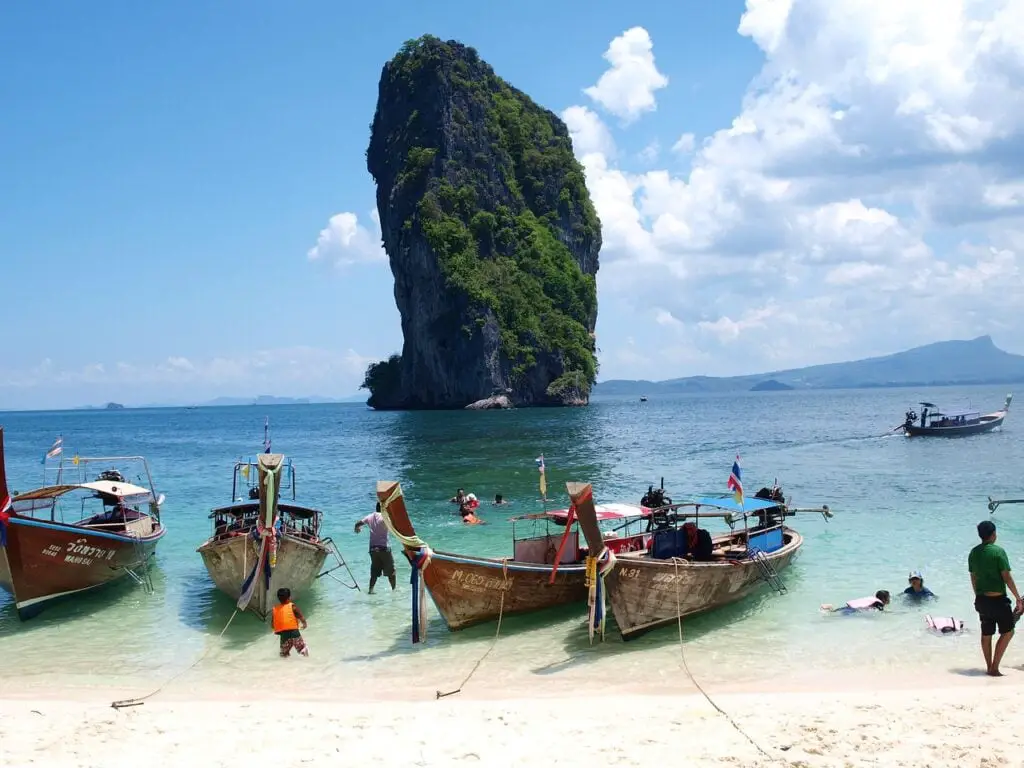
Essential Southeast Asia Travel Planning
Dry season is the sweet spot for travel, especially if you’re looking for cheap destinations and easy backpacking routes. Having good insurance, thinking ahead about safety, and packing smart really help keep things smooth and affordable.
Best Time To Visit Southeast Asia
The best time to visit Southeast Asia is during the dry season, from October to March. Countries like Thailand, Vietnam, and Cambodia see less rain, so it’s cooler and much nicer for getting out and about.
Monsoon season, especially from May to September, brings heavy rain and sticky humidity. Some islands even close when the weather’s bad.
If saving money matters most, the rainy season means fewer crowds and lower prices. Just watch out for flooding in some areas—it can be a pain.
Weather patterns change a bit by country. For example, Indonesia’s dry season doesn’t match up with the mainland’s, so check ahead. Planning by country helps dodge travel headaches. If you want more on this, here’s a handy link for weather tips for Southeast Asia.
Travel Insurance And Safety Tips
Travel insurance is a must for anyone backpacking Southeast Asia. It covers lost bags, trip cancellations, theft, or medical issues, stuff you really don’t want to deal with on your own.
Plenty of affordable plans include coverage for adventure sports or motorcycle mishaps, which come up more often than you’d think.
Southeast Asia feels pretty safe for tourists, even solo travelers. Petty theft can happen in busy spots, so a money belt and locking up your valuables is just smart.
Staying in guesthouses with good reviews and listening to local advice helps keep risks low. Keeping digital scans of your passport and insurance info makes it way easier to replace things if you lose them.
Always have emergency contacts handy. Dress modestly in temples, and keep your eyes open, common sense goes a long way.
Travel Gear And Preparation
Packing light is key for backpackers here. A 40- to 50-liter backpack is just right for hopping between cities and islands.
Bring lightweight clothes, a rain jacket, walking sandals, sunscreen, and bug spray. Don’t forget:
- Reusable water bottle with filter
- Power adapter
- Basic medical kit
- Quick-dry towel
- Small padlock for hostel lockers
Booking accommodation online usually saves money and helps you lock in a safe spot, especially if you’re headed somewhere busy. Agoda’s a favorite for budget rooms and honest reviews. If you want more tips, check out this backpacking travel guide for Southeast Asia.
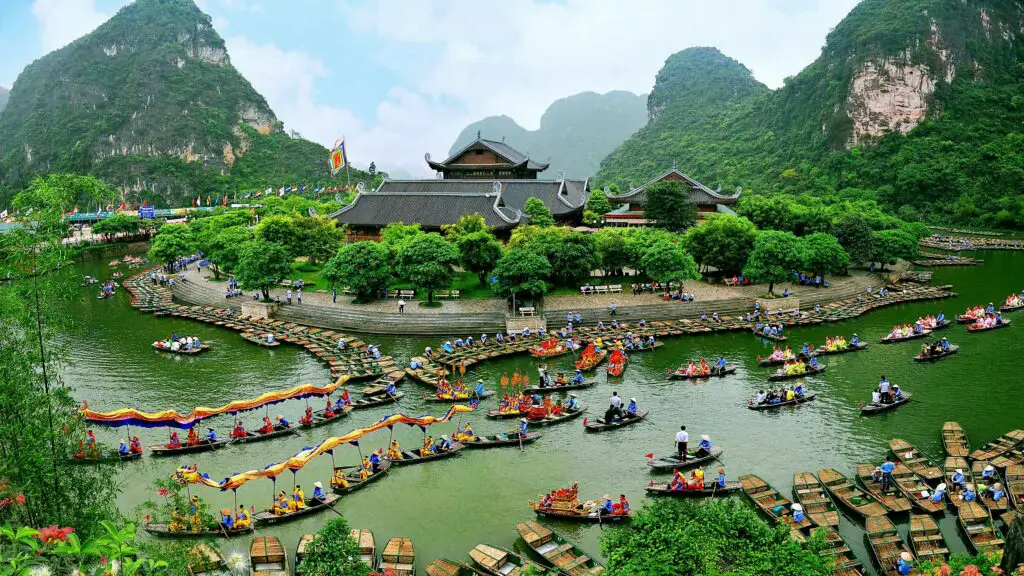
Top Cheap Destinations In Southeast Asia
If you want to travel Southeast Asia on a budget, you’re in luck. There are loads of affordable places packed with culture, amazing food, and gorgeous scenery.
Transport, accommodation, and food are cheap, so your money goes a whole lot further. You can try all sorts of activities without stressing over your wallet.
Vietnam’s Affordable Highlights
Vietnam is one of the most budget-friendly countries in the region. Cities like Hanoi and Ho Chi Minh City offer accommodation as low as $10–15 per night in hostels or basic guesthouses.
Street food is everywhere; classic dishes like pho or banh mi can cost less than $2. Exploring the landscapes doesn’t have to cost much either.
Ninh Binh is famous for its limestone mountains and boat rides, and it’s much quieter than the touristy spots. Buses and trains connect the north and south for under $20, so you can see a lot without breaking the bank.
In Ho Chi Minh City, places like the War Remnants Museum and local markets show off the country’s history and daily life for just a few bucks. Most parks and temples have small entrance fees. For more, check this Vietnam budget travel overview.
Sample daily budget for Vietnam:
| Expense | Estimated cost (USD) |
|---|---|
| Hostel bed | $7-$12 |
| Meals | $5-$10 |
| Transport | $3-$6 |
| Attractions | $2-$5 |
Budget-Friendly Malaysia
Malaysia is a mix of modern cities and natural beauty. Kuala Lumpur has cheap public transport and plenty of local spots to eat for little money.
Most hostels and guesthouses in the city have beds for around $10–$15 a night. Penang’s another top pick, especially its historic George Town area.
Street food here is legendary and cheap. You can try laksa or char kway teow for less than $2 at local markets. Penang even has free city buses, which is a nice bonus.
Langkawi is famous for its beaches. While some resorts cost more, you’ll still find budget hotels and hostels without much trouble.
Outdoor activities like hiking and beach days don’t cost much, so it’s easy to keep spending low. Budget tip: Use local buses and trains when you can. Sometimes domestic flights are under $20–$30, which can save both time and money.
Backpacking In Cambodia
Cambodia is known for its low costs, especially in Phnom Penh, Siem Reap, and Battambang. Hostel beds often start at $5, and private rooms can be below $15 a night.
Meals at street stalls and markets usually run $1–$3. Angkor Wat is the big draw here. The entrance pass is the main expense, but it’s still reasonable compared to other world sites.
Siem Reap is full of cheap food and lodging, so it’s a great base for temple exploring. Phnom Penh’s highlights include the Killing Fields and Royal Palace, both with low entry fees.
Battambang is quieter and known for its countryside and bamboo train rides. Getting around Cambodia is cheap, too. Buses between cities cost $5–$10. Here’s a guide for more on cheap places to travel in Southeast Asia.
Cheap Travel In Laos
Laos is quieter than its neighbors and often called the cheapest country in Southeast Asia. In Vientiane, hostel beds and simple rooms can be under $10 a night.
Food at markets is basic and costs just a few bucks per meal. Luang Prabang stands out for its temples and night markets, which are both affordable and easy to visit.
The daily almsgiving ceremony is free to watch. Most temples charge $1–$2 for entry. Vang Vieng, once all about river tubing, now draws hikers and those into caves and blue lagoons.
Transport in Laos is cheap but slow. Vans and buses link major cities for around $5–$12 per trip. If you want to dodge crowds and spend less, Laos is a chill and welcoming pick, with its laid-back riverside towns. More tips are in this list of cheap Asian countries to visit.
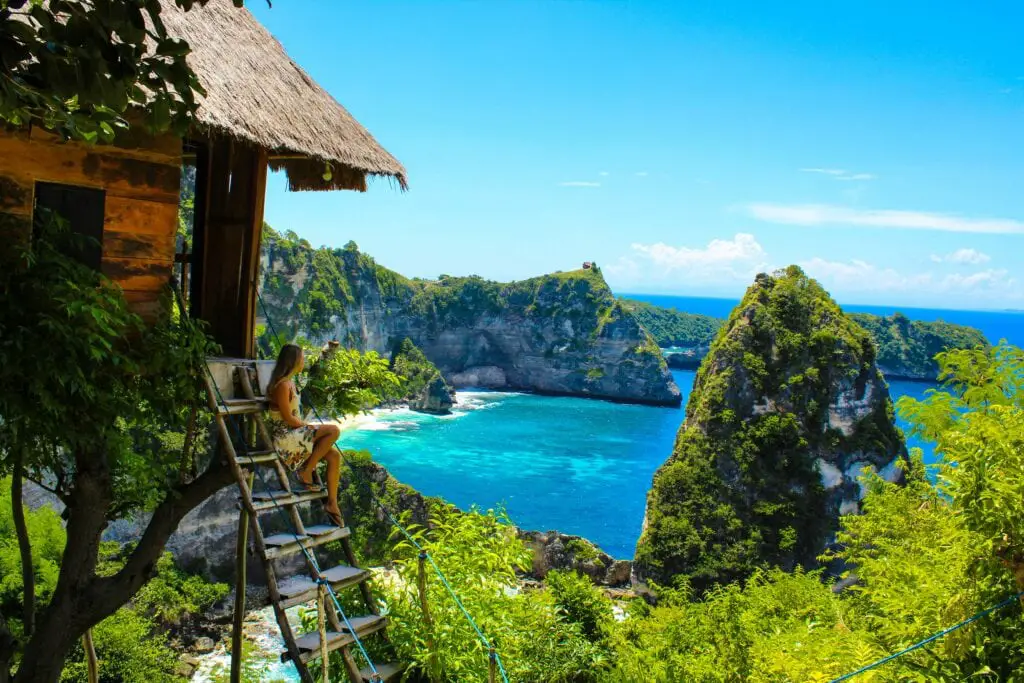
Affordable Adventure In Thailand And Indonesia
Plenty of travelers head to Southeast Asia for the scenery and culture, but let’s not kid ourselves—the low prices are a huge draw. Thailand and Indonesia give you some of the best deals for backpackers, with cheap eats, hostels, and local experiences.
Thailand’s Best Budget Spots
Thailand has legendary street food, lively markets, and friendly hostels. Bangkok is a classic starting point, especially Khao San Road, where you can grab a bed and a meal for just a few dollars.
Night markets sell everything from noodles to quirky souvenirs. Head north to Chiang Mai, and you’ll find prices drop even more.
Hiking, night bazaars, and temples don’t cost much. Guesthouses and dorms in the center are clean and affordable.
Southern Thailand is also in reach for budget travelers. Phuket and Krabi have cheap hostels near the beaches, and local buses keep transport costs low.
The Full Moon Party on Koh Phangan is famous, and prices do spike then, but you can still find deals if you look. For more, check out Nomadic Matt’s Thailand guide.
Exploring Indonesia On A Budget
Indonesia is a country of islands, each with its own budget-friendly adventures. Bali is the most popular, with surf beaches and temples everywhere.
Guesthouses and hostels start cheap, especially if you avoid the tourist hotspots. Eating at warungs, local family restaurants, keeps meal costs low.
Sumatra is perfect if you want fewer crowds and even lower prices. You can trek in rainforests or visit Lake Toba for little money. Ferries between islands are cheap, and things like snorkeling or scooter rentals don’t cost much either.
Every island in Indonesia has its own vibe and price point, but local transport and street food are affordable everywhere. Bali and the rest give you a mix of nature and value, making Indonesia a top pick for budget backpackers. There’s more in this Indonesia backpacking guide.
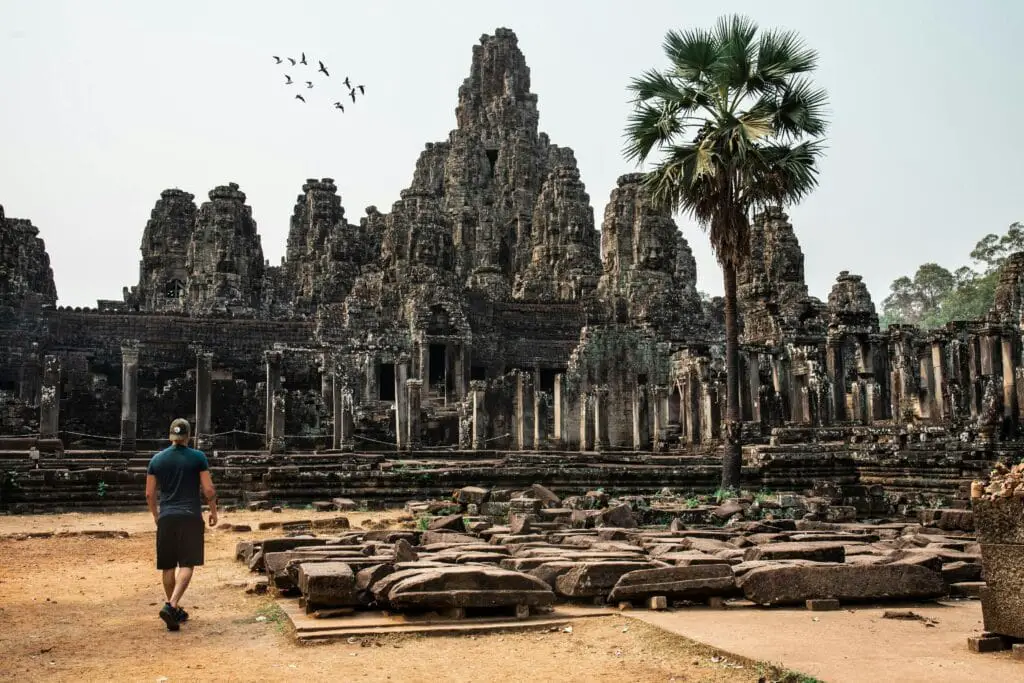
Accommodation And Where To Stay
Staying in Southeast Asia won’t drain your wallet. There’s something for every budget, from shared dorms to private rooms and even local homestays that mix comfort with a bit of character.
Lots of places have social spaces, free breakfast, or short-term deals. You don’t have to settle for bland or cramped unless you want to.
Hostels And Guesthouses
Hostels are a go-to for backpackers and solo travelers. Dorm-style rooms with shared bathrooms are the norm, and beds in places like Vietnam or Cambodia can go as low as $5 per night.
Many hostels include common areas, free Wi-Fi, and sometimes breakfast. They’re great for meeting people. Some even run walking tours or cooking classes, which is a nice bonus.
Guesthouses, usually run by families, offer a quieter, homier feel. Private rooms range from $10 to $20 per night, depending on where and when you go.
Popular booking sites list tons of options in cities, small towns, and even remote villages. There’s no shortage of choices, so you can pick what fits your vibe and budget.
Budget Hotels And Unique Stays
Budget hotels give you private rooms and perks like air-conditioning, en-suite bathrooms, and housekeeping. In Thailand, Laos, or Indonesia, prices usually start around $15 a night.
These hotels work well for couples or travelers who want more comfort and privacy without spending a fortune.
Unique stays are catching on in Southeast Asia. You can sleep in bamboo huts, floating bungalows, or hillside lodges for a different vibe.
These places sometimes cost a bit more, but booking sites still show deals under $30 per night.
If you head away from the main tourist spots, small hotels and homestays often give you more for your money. For more ideas, check out this list of affordable places to stay in Southeast Asia.
Tips For Booking Cheap Accommodation
Book early if you want the lowest prices, especially during busy travel seasons. Many hostels and guesthouses offer last-minute discounts, but the best ones fill up quickly.
Apps and booking sites like Agoda, Hostelworld, and Booking.com make it easy to compare deals. Sharing rooms or staying in less touristy neighborhoods saves money, too.
Some places offer weekly or monthly rates if you’re staying longer. Look for extras like free breakfast, airport pickup, or laundry, those little perks can make your stay way more comfortable without extra cost.
For more advice, check out budget travel tips in Southeast Asia.
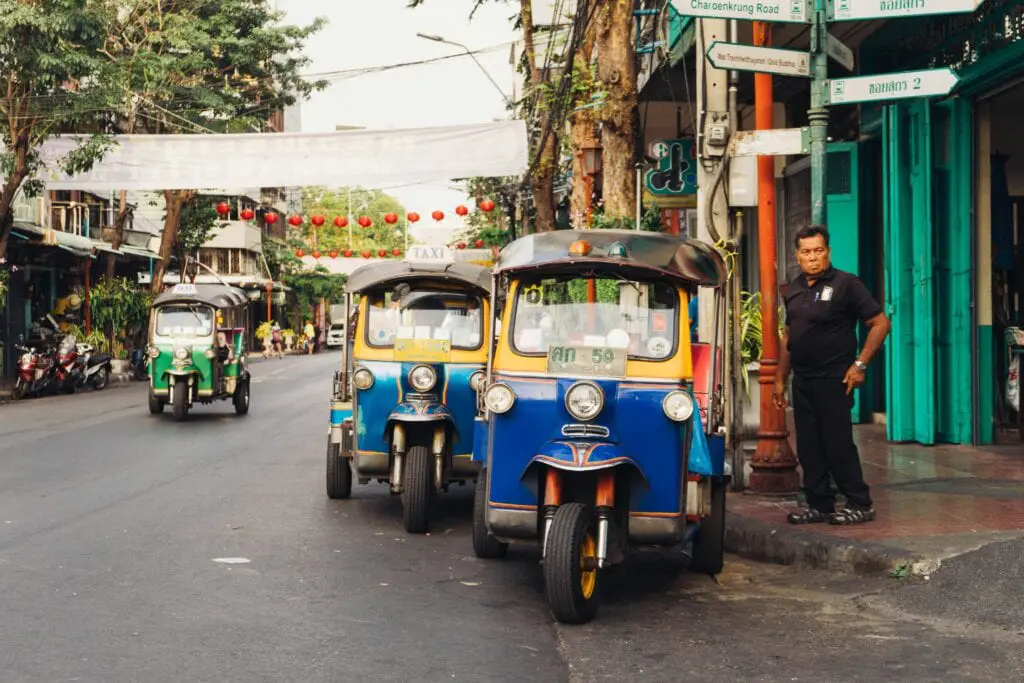
Getting Around Southeast Asia
Southeast Asia is huge, but tons of transport options make it surprisingly simple and cheap to get around. Picking the right way to travel can save you both time and cash.
Buses, Trains, And Local Transport
Buses are the go-to for backpackers traveling between cities or even crossing borders. Thailand, Vietnam, Laos, and Cambodia all have loads of long-distance bus routes.
They’re cheap and easy to book at travel agents or guesthouses. In big cities like Bangkok and Ho Chi Minh City, you’ll find city buses, light rail, and metro systems.
These local rides are straightforward and cost less than a buck. Trains aren’t everywhere, but Thailand has a solid rail network that connects the country and links to Malaysia and Singapore.
Vietnam’s coastal train is slow but scenic, though it usually costs more than buses. For route tips and prices, check out train and bus options in Southeast Asia.
Flights And Cheap Airlines
Flying is easily the fastest way to cover long distances, especially if you’re short on time. Budget airlines like AirAsia, Scoot, and VietJet Air run cheap flights between cities like Bangkok, Kuala Lumpur, Singapore, Hanoi, and Bali.
If you book early or catch a sale, airfares can be shockingly low. Sometimes, flying is even cheaper than trains or buses for longer trips.
Use flight comparison tools to hunt down deals, but double-check baggage rules—budget airlines love to tack on fees for checked bags. Domestic flights are handy for island destinations or places with tricky overland routes.
This makes it easy to squeeze more spots into your Southeast Asia travel itinerary.
Scooters, Tuk-Tuks, And Taxis
Scooters and motorbikes are everywhere. Renting one in Thailand, Vietnam, Laos, or Indonesia costs about $5–$10 a day.
Just don’t skip the helmet and always check local driving rules. Tuk-tuks and cycle rickshaws buzz around cities and towns, especially in Cambodia, Thailand, Laos, and Myanmar.
Agree on the price before you hop in, since meters aren’t always a thing. Taxis are easy to find in most cities, but not all use meters.
Apps like Grab make getting a safe, fair ride less of a hassle. Short trips usually cost under $5, which works out well for solo travelers or small groups.
How To Get To And Around Major Cities
Getting to major cities like Bangkok, Kuala Lumpur, and Ho Chi Minh City is simple by train, bus, or flight. Big bus and train stations are usually near the city center, so arrivals and departures aren’t a headache.
Once you’re in town, you’ve got options. Metro systems cover a lot of Bangkok and Singapore.
Public buses, ride-hailing apps, and ferries help you get between neighborhoods, markets, and food spots. If you’re planning your trip, it’s smart to look up how to get around each city in advance.
You’ll find maps, schedules, and ticket prices online or at the stations. Mixing local public transport with taxis keeps your costs down while you explore major city highlights.
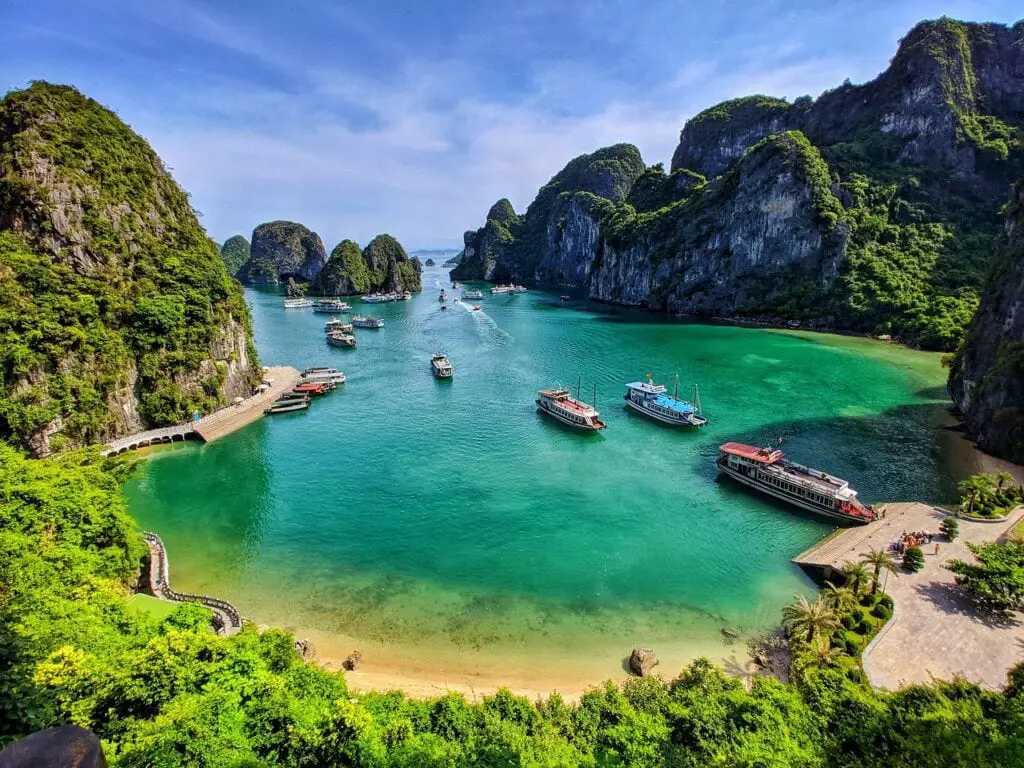
Must-Do Activities And Attractions
Southeast Asia is packed with gorgeous beaches, adventure, and ancient culture. Every country has its own mix of natural beauty, nightlife, and historic sites.
Island Hopping And Beaches
Tropical islands here mean clear blue water and powdery sand. Palawan in the Philippines is famous for dramatic cliffs and turquoise lagoons.
El Nido has boat tours to secret beaches and lagoons surrounded by tall rocks. Thailand’s southern islands, Koh Phi Phi, Koh Lipe, are perfect for snorkeling, diving, or just chilling on the sand.
Indonesia’s Gili Islands and Bali have a relaxed vibe and unreal sunsets. In Vietnam, Ha Long Bay stands out with its thousands of limestone islands.
Boat cruises and kayaking between the islands are a must. Island hopping is affordable, with local ferries and tours for every budget. For more, check this guide on top Southeast Asia islands and beaches.
Jungle Trekking And Hiking
If you’re after adventure, jungle trekking is the way to go. Northern Thailand, think Chiang Mai and Pai, has guided hikes through thick rainforest and to waterfalls.
Indonesia’s volcanoes, like Mount Bromo and Mount Rinjani, are epic for multi-day treks. Malaysia’s Cameron Highlands are all about tea plantations, mossy forests, and cool air.
Laos has treks near Luang Prabang and in the Bolaven Plateau, with coffee farms and waterfalls along the way. Borneo’s ancient rainforests are home to orangutans and rare wildlife.
Whether you want a short day hike or a serious climb, there’s something for everyone.
Temples, Culture, And History
Heritage sites, temples, and living traditions are everywhere. Cambodia’s Tuol Sleng Genocide Museum gives a glimpse into the country’s past.
Angkor Wat, one of the world’s largest temple complexes, is a must-see. In Myanmar, Bagan’s thousands of temples and Mandalay’s old palaces are standouts.
Thailand’s Ayutthaya is packed with impressive ruins. Art and music shape local culture, and you’ll find traditional markets, puppet shows, and festivals all year.
The Mekong River is a lifeline, with floating markets and riverside villages to explore.
Nightlife And Festivals
Nightlife in Southeast Asia is a wild mix. Bangkok is packed with rooftop bars, nightclubs, and street food markets.
Bali’s got beach parties and live DJs. Ho Chi Minh City and Hanoi are buzzing with lively bars and music spots.
Beach spots like Koh Phi Phi and Gili Trawangan throw parties under the stars. Festivals light up the region, with art, music, and cultural shows everywhere.
Lunar New Year and Thailand’s Songkran water festival are huge. Most cities and tourist areas have cheap food, drinks, and entertainment, so backpackers can jump right in. For party destinations and events, see this Southeast Asia bucket list of things to do.
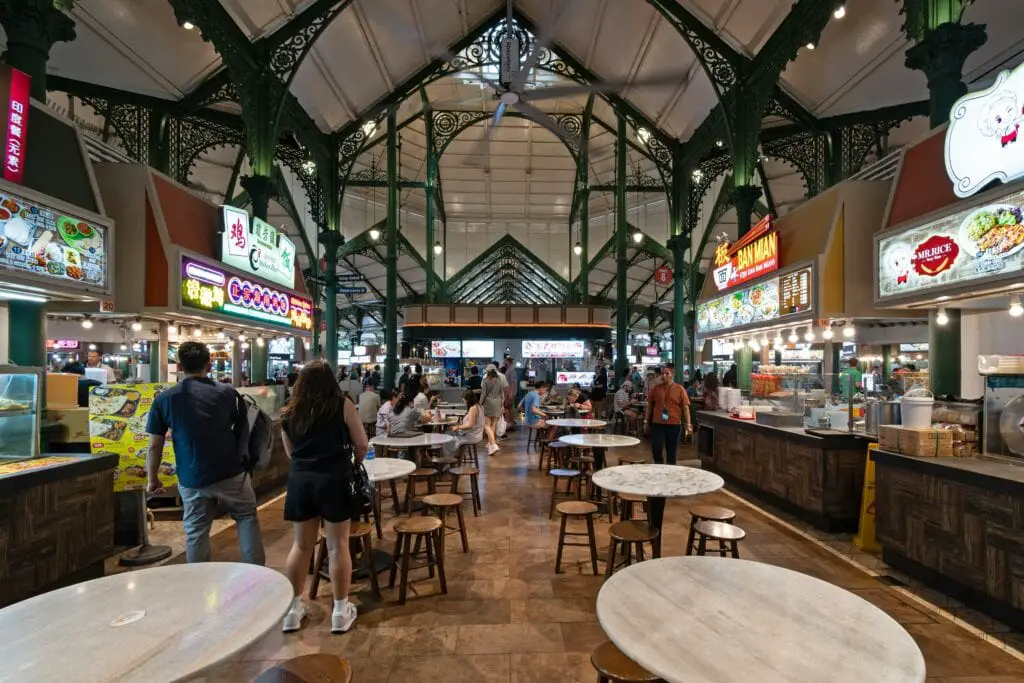
Budget Food And Local Cuisine
Southeast Asia’s food scene is wild, colorful, tasty, and cheap. You can try famous street food, local dishes, and snacks without blowing your budget.
Street Food Hotspots
Street food is a highlight, especially in cities like Bangkok, Hanoi, Penang, and Ho Chi Minh City. Stalls stay open late, selling pad thai, pho, banh mi, and satay.
Meals often cost just $1-$3. Hit up Chiang Mai’s historic markets, Kuala Lumpur’s night bazaars, or Jakarta’s busy sidewalks, and you’ll get a world of flavors and smells.
Busy stalls tend to have good hygiene since the food moves fast. If you’re following the Banana Pancake Trail, you’ll spot Western pancakes alongside the local stuff.
Eating street food is the best way to sample tons of dishes and get a real feel for the culture.
Affordable Local Eats
Local restaurants, “warungs” in Indonesia or “hawker centers” in Singapore and Malaysia, serve up fresh meals for cheap. In Vietnam, a bowl of pho or bun cha is rarely more than $2.
In Thailand, you’ll find curry or stir fry for under $3. These spots serve what locals eat every day: nasi goreng, laksa, fried rice, and more.
Menus might not be in English, but pointing at pictures or dishes usually works. If you want to eat well and save money, these small local places are perfect.
Hostels and guesthouses often recommend hidden gems with big portions and low prices. Trying local breakfasts like kaya toast or rice porridge keeps things interesting and cheap.
Markets And Food Tours
Open-air markets are awesome for tasting snacks, fruit, and drinks. Chatuchak Market in Bangkok and Ben Thanh Market in Ho Chi Minh City are always busy.
Trying tropical fruit, spring rolls, or grilled skewers is fun and won’t break the bank. Most snacks cost less than a dollar, so you can try a bunch.
Guided food tours run in lots of cities if you want to dig deeper. These tours hit several spots and introduce you to regional specialties.
Learning about ingredients and the stories behind dishes adds something extra. It’s a great way to appreciate the range of local cuisine.
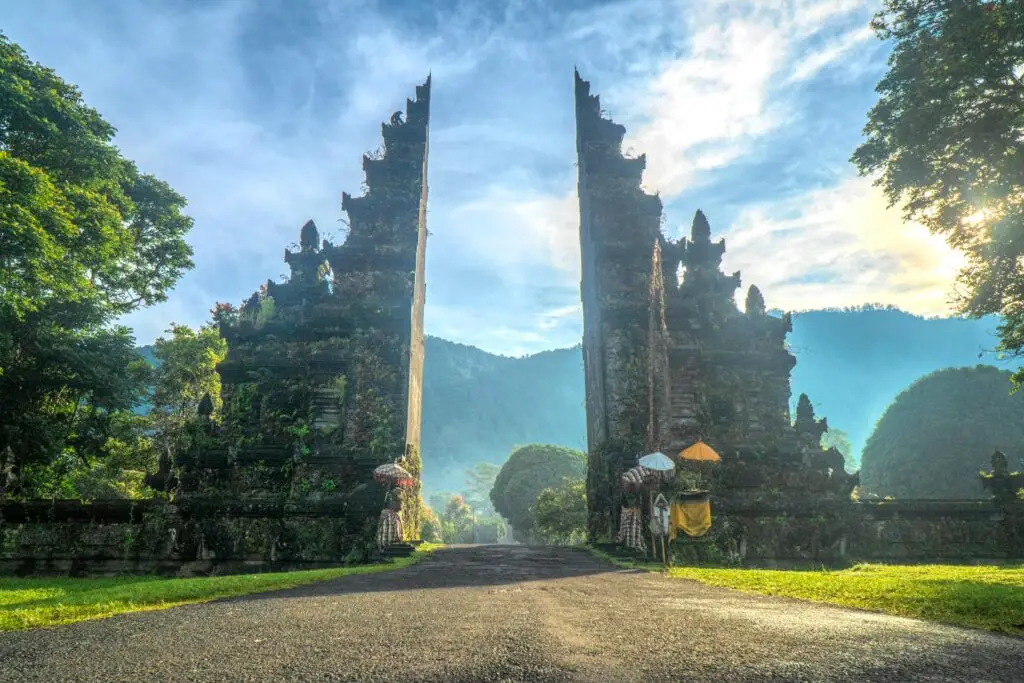
Sample Southeast Asia Backpacking Itinerary
Having a travel plan helps you get the most out of your budget and time. With cheap spots, easy routes, and plenty of ways to get around, Southeast Asia works for trips of all lengths.
Two-Week Classic Route
In two weeks, you can hit highlights in Thailand, Cambodia, and Vietnam. Many start in Bangkok for its street food and temples.
From there, take an overnight bus or train north to Chiang Mai for hiking and elephant sanctuaries. Next, cross into Cambodia to see Angkor Wat in Siem Reap.
Travel by bus or van brings you to Phnom Penh, where you’ll find history and food markets. Most finish in southern Vietnam, visiting Ho Chi Minh City and the Mekong Delta.
Accommodation runs from hostels to guesthouses, and meals are just a few bucks. For more ideas and details, see this Southeast Asia travel guide.
One-Month Adventure Trail
A one-month trail lets you see more countries and a wider mix of landscapes. Most folks start in Thailand, then tack on Laos, Vietnam, and Cambodia.
Bangkok, Chiang Mai, Luang Prabang in Laos, and Ha Long Bay in Vietnam are some of the classic stops.
The route might look like this:
| Country | Destinations | Activities |
|---|---|---|
| Thailand | Bangkok, Chiang Mai, Pai | Temples, night markets |
| Laos | Luang Prabang, Vang Vieng | Waterfalls, tubing |
| Vietnam | Hanoi, Ha Long Bay, Hoi An | Boat tours, old towns |
| Cambodia | Siem Reap, Phnom Penh | Angkor Wat, museums |
Bus, train, and budget airlines keep things affordable. Night buses are pretty common for long hauls and double as a place to sleep, which saves a bit on accommodation.
If you avoid the main tourist spots, you can keep costs down. For more details, check out this backpacking itinerary guide.
Flexible Itineraries For Every Budget
Not everyone sticks to a set route. Some travelers just go where cheap flights or new friends point them.
Hostels, homestays, and dorms mean there’s always somewhere to crash, no matter your budget. Eating at local markets or street stalls can really stretch your money.
Apps like Grab and budget airlines make getting around pretty painless. Before you go, it’s smart to check visa rules and think about the weather—monsoons can really change plans.
Mixing up cities, beaches, and rural spots keeps things interesting. Plans change fast in Southeast Asia’s backpacker scene, and honestly, that’s half the fun. For more ideas, see this comprehensive travel guide.
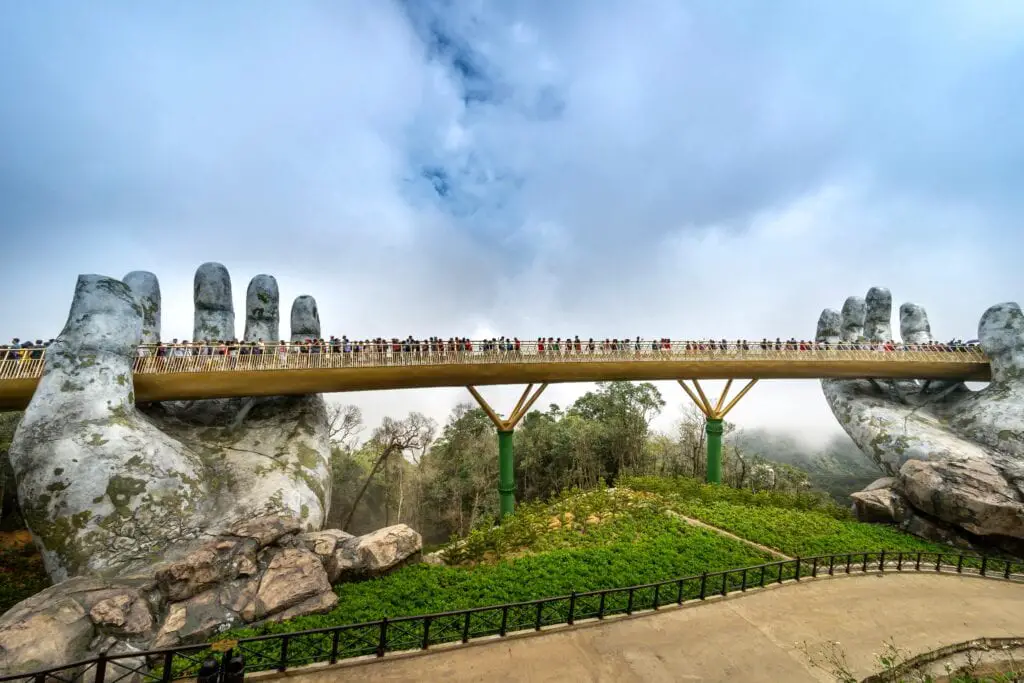
Frequently Asked Questions
Southeast Asia draws in budget travelers with its low prices, welcoming locals, and a wild variety of cultures and scenery. It’s no wonder backpackers flock here for cheap adventures and something new.
What is a realistic budget for a 1-month backpacking trip in Southeast Asia?
Most people spend $800 to $1,500 USD for a month on the road. That covers hostels, street food, public transport, and basic activities.
Your country choices and travel style can nudge that number up or down.
Can you recommend an optimal 2-week travel itinerary for Southeast Asia?
Lots of travelers kick things off in Bangkok, head north, then swing over to Siem Reap for Angkor Wat. After that, Phnom Penh or Vietnam’s Ho Chi Minh City are popular next stops.
If you want to chill out at the end, southern Thailand or Bali in Indonesia are solid picks.
Which countries in Southeast Asia are best to start a backpacking journey?
Thailand usually tops the list for first-timers—it’s got easy transport, decent roads, and plenty of tourist services. Vietnam and Malaysia are also great choices for affordable travel and a big backpacker crowd.
What are the top cheap destinations in Southeast Asia for budget travelers?
Vietnam, Cambodia, and Indonesia are famous for being cheap places to travel in Southeast Asia. Street food, hostels, and local buses keep costs low.
Laos and parts of Thailand give you a lot of bang for your buck too.
How much money is typically needed for a 3-month Southeast Asia tour?
Expect to spend somewhere between $2,000 and $4,000 USD over three months. That covers daily costs, cross-border travel, and some sightseeing.
If you want more comfort or fly a lot, you’ll need a bit more.
What are some essential tips for first-time backpackers in Southeast Asia?
Use common sense with your valuables. Don’t carry a lot of cash—there’s really no need.
Get travel insurance. It’s not just a formality; it can save you a ton of trouble.
Try the local foods. Seriously, some dishes might surprise you in the best way.
Respect local customs. A little research on cultural etiquette goes a long way.
Check visa requirements before you arrive. Some countries have rules that can catch you off guard.
Booking your first night’s accommodation ahead of time helps ease the arrival stress. After that, you can just figure it out as you go.
Generally, the region feels safe. Still, petty theft does happen near tourist hotspots, so keep an eye on your stuff—just like Southeast Asia travel experts suggest.
You Might Also Like:
If you enjoyed this post on How to Backpack Across Asia Like a Pro, you might also like: See the World on a Budget: Insider Tips and Tricks for Affordable Travel, Best Countries to Visit for Under $1000, Europe Backpacking: How to Have an Epic Adventure.
